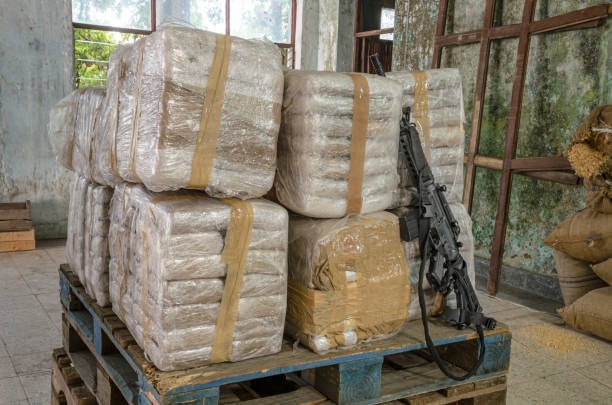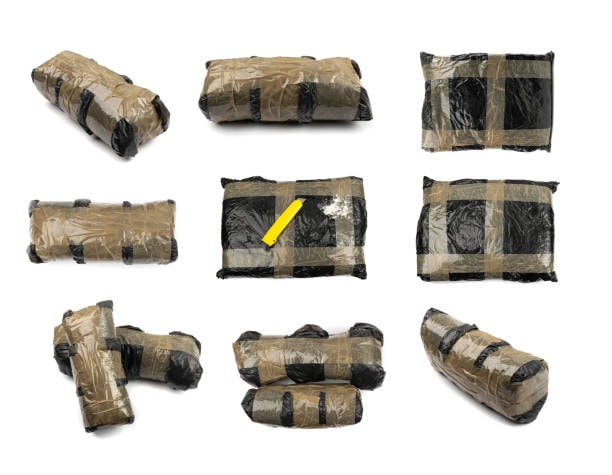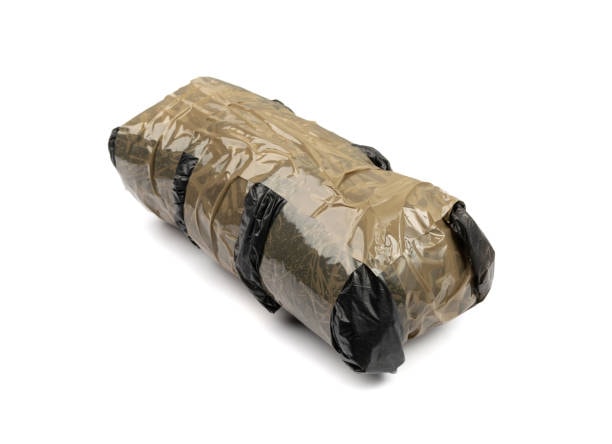
Find end-to-end 2COC shipping solutions through professional freight forwarding solutions, including various types of containers . Understand COC certificates, customs clearance, and effective China-to-global logistical alliances to trade internationally without any hassles.

The global shipping industry has taken a new twist and any other developmental aspect of shipping such as 2COC shipping is turning out to become even critical to other trade companies in transit. The requirements to comply with Certificate of Conformity (COC) have changed the attitude of companies towards international logistics, especially those that export goods shipped out of China to countries that demand a certain form of compliance documentation. International commerce cannot be completely successful without understanding these complexities.
The second ingredient of effective 2COC shipping is the professionalism of logistics companies. Shenzhen Guanwutong International Freight Forwarding Co., Ltd. (GWT Worldwide) is the best in the professional provision of logistics services on foreign consignment and operates in the field of foreign haulage, supply chain service provision, and providing cross-border e-commerce logistics. Having a well-established position in Chinese and global markets, GWT Worldwide provides a secure, affordable, and tailor-made services and logistic solutions to the world of businesses, including the air freight services, sea freight services, China-Europe railway transportation, international express services, customs clearance, warehousing, and Amazon FBA shipping operations.
Understanding 2COC Shipping Fundamentals

2 COC shipping is a niche of international freight forwarding which is specialising in compliance-based logistics services. This type of service will be used to fill the gap of increasing documentation requirements in Certificate of Conformity in international trade, as well as products shipped out of China and exported to the high-regulatory environment. The modern sophistication of supply chains requires experience in the ability to venture through regulatory mechanisms, at the same time being efficient and cost effective.

The basic idea of the 2COC shipping is the systematized way of managing documentation, guaranteeing the compliance with regulations, and coordinating logistics. Freight forwarding professionals in the field have the knowledge and expertise to deal with the complex issues in various destination countries and can gain access to the byzantine regulations in the international trade market. This experience also comes in handy especially when we are handling time-sensitive freights or products that need special certification.
The Critical Role of COC Certificates in International Trade

This is because all imported goods must have a certificate of conformity documents, which acts as a gate keeper to international commerce so as to verify the safety, quality and the standards of the goods being imported as regulated by specific countries in the destination country. These certificates ensure that companies apply products that meet the technical regulations, standards and other requirements that can be applied in the importing country. Lack of good COC may lead to a lot of delays, extra expenses, and total refusal of freights at their ports of destination.

Different markets require different types of COCs and acquainting with these differences is therefore vital to international shipping. Other countries demand pre-inspection and certificates during shipping, but others recognize a declaration of the manufacturers or reports of tests carried on by third parties. It is even complicated considering the fact that various categories of products might require various certification appliances despite being in the same destination country.
China’s Position as a Global Manufacturing Hub

Being the manufacturing powerhouse of the world, China is the source of infinity of overseas shipments that have to meet COC standards. The manufacturing capacity of the country is immense and cuts across almost all product categories, such as electronics and textiles, machinery and consumer goods. Such diversity of manufacturing activities implies that freight forwarders who engage in shipments of goods originated in China need to be well informed on the different product certification requirements in different destinations.

The Chinese government has as well taken a lot of initiatives to make export procedures more efficient and meet international standards. The measures put in place in this case involve the upgrading of quality control, better certification procedures and more coordination among the manufacturers, the certification bodies and the logistics companies. It is also important to learn about these developments to streamline the 2COC shipping operations.
Air Freight Solutions for Time-Sensitive COC Shipments
Air freight is the most premium form of 2COC freight where the time factor of the shipment is far more significant than any other parameter. The time factor in the air transport is especially significant in the case of perishable products, electronic goods of high prices or products produced with narrow market windows. Air Freight Provider companies have a full range of proposed solutions that analyze the logistics process by combining a COC documentation system and an organized process of cargo handling and customs clearance.

The further development of the air freight industry provides the special treatment of the COC-valid shipment with the special handling process, special documentation, and tracking options. These developments mean that shipping documents are sent along with goods during the shipping procedure to avoid carrying delays at the destination airports occasioned by documentation.
Sea Freight: Cost-Effective Solutions for Bulk COC Shipments

Sea freight is considered as the main pillar of international trade when movements involve large volumetric shipment accompanied by COC certification. Cost benefits of transporting goods by ocean are the main reason why it has been known to be the mode of transport of an item when the nature of the product to be transported contains the flexibility of the transit time. The development of modern container shipping has enabled it to handle intricate documentation needs in shipping and retain the basic cost advantages that make sea shipping an option of choice among shippers who desire moving large volumes of shipments.
Digitalization of sea freight business processes has ensured that there is positive change in handling COC documentation. Automated systems of electronic bill of lading, digital certificate management systems and automated customs declaration have facilitated smooth operations and minimised the possibility of documentation error, which may jeopardise the clearance of shipments.
China-Europe Railway Transport: The Middle Ground Solution

China-Europe railway, another convincing alternative to 2COC shipping reducing the cost and speed of long-haul transportation by air and sea to the competitive state. The overland route has picked up well as a route of choice by businesses that would like their goods delivered faster than a sea route but without the high-cost of air transport. The option of using rail is particularly appealing in Europe where high value of goods has to be transported by rail through the COC certification requirement.
Rail is also convenient since documentation is easy and the project is not passed through numerous maritime jurisdictions unlike oceanic shipping. It identifies an opportunity to simplify the documentation management COC to manage the complexity of COC documentation management and still be able to meet the affordability and reliable transit times. Service reliability and capacity is further improving because of the increased infrastructure investment in the China- Europe rail line.
International Express and Courier Solutions for Small COC Shipments
In small package, sample and even rush documentation shipping, international express service is one of the main considerations in 2COC shipping. Its services include the pintu ke pintu delivery and full cubic tracking in addition to the fast customs clearance procedures. The use of COC documentation in the process of work with express provides the needs that even the smallest shipments should be sent according to the regulation of the destination country but do not lose their convenience or rapid delivery.
Such specialized procedures are identified in express courier networks in order to handle their certification documents, whereby the documentation follows the shipments through the delivery process. Such a focus on documentation control is needed in any business shipping prototypes, samples or small-batch products that need to meet COC requirements.
Customs Clearance Complexities in COC Shipping

Customs clearance may be considered as one of the most important points of the 2COC shipping, since the wrong documentation or other mistakes in the procedure may cause serious delays and extra expenditures. Professional freight forwarders carry a knowledge on any complexities of the custom requirements that are needed across several jurisdictions, taking note that the COC certificates that are issued and related documentation undergo specific country requirements.
The process of customs clearance connects various stakeholders, such as custom officials, certificates bodies, inspection organizations and other departments of the government. To manage such interactions and at the same time remain compliant, there is a strong need to have in-depth understanding of regulatory frameworks and relationships with the key players in the destination markets.
Warehousing and Distribution in COC-Compliant Supply Chains
Contemporary warehousing solutions aided 2COC shipping by having special storage facilities to keep the integrity of the products and the security of the documentation. Such operations usually offer value added services like labeling products, repackaging, and quality control checks which assist requirements of compliance with COC, helping to avoid additional detention fees . Incorporation of warehousing services into end-to-end logistics services allows a firm to streamline its supply chain activities without compromising the regulations.
Higher technologies of warehouse management facilitate monitoring not only of the physical inventory, but also the corresponding documentation to ensure that COC certificates are effectively connected to chosen product batches at the time of storage and distribution. This traceability can be critical as it allows to remain compliant and prompt when responding to a quality or regulatory issue.
Amazon FBA Shipping and COC Compliance
The expansion of online retail and e-commerce has developed unique demand to the COC compliant product shipments bound to Amazon fulfilment facilities. Amazon FBA shipping needs to be reported accurately, with particular labeling specifications, and also adhere to the policies of Amazon itself as well as destination policies carrier owned container. The work of specialized logistics services that provide FBA services is professional and is associated with the simultaneous management of COC documentation along with Amazon requirements, often utilizing shipper owned containers .
The implementation of FBA shipping does not boil down to basic COC compliance; it also involves categorization of the products, declaration of dangerous materials, and packaging carrier owned containers. Recognizing such details and executing them to meet the compliance in various Amazon stores requires expert skills and procedural approaches carrier owned container.
Technology Integration in Modern 2COC Shipping

The adaptation of digital transformation has disrupted 2COC shipping by facilitating automation of documentation processes, live tracking and compliance tracking platforms shipper owned container
. The technologies minimize manual mistakes, accelerate speed of processing and make the shipping more visible. Cloud based services are those that allow smooth exchange of information among shippers, freight forwarders and the customs owned freight containers.
Machine learning applications and artificial intelligence are being increasingly used in order to forecast possible compliance concerns, route optimization own container, and automation of routine documentation tasks. The technologies reduce operation costs of businesses involved in international trade as it makes their shipping operations more reliable and efficient.
Risk Management in COC-Compliant Shipping
Successful 2COC shipping is impossible without proper risk management. Such measures include documentation risk, regulatory compliance risk, transportation risk and financial risk freight container. Companies that specialize in logistics design exhaustive risk management models that anticipate problems in time and devise counter strategies to safeguard consignments and prevent or reduce interference cargo container.
COC-specific insurance covering the shipping of goods can further help out against documentation problems, regulatory fluctuations and other international trading dangers shipping containers. Knowing options on insurance plans, and shortcomings in covering business risks make businesses make informed decisions on their modes of risk transfer soc containers.
Cost Optimization Strategies for 2COC Shipping
Cutting on the expenses without jeopardizing the COC implementation demands planning and quality of operations. Effective cost optimization must be selected meticulously through mode choice, merger tendencies, documentation simplification, and management of the relationships with a free carrier freight forwarder. Freight forwarders are able to take advantage of their professional skills and relations in the network to find opportunities to save costs without jeopardising facilitation or stepping on the quality of the services offered container liner.
Shipping cost can be consolidated, routed strategically, and timed flexibly which will substantially decrease the cost without breaching COC safety regulations. Before businesses can make the optimal decisions with regard to speed, cost, and service levels soc and coc containers, they need to understand the trade-offs and how they pertain to a particular shipping needs distant or remote location.
Regulatory Trends Affecting 2COC Shipping
The regulatory environment in the world of international trade is still changing and shipping companies within 2COC are being impacted by requirements, standards and new enforcement priorities own containers. It is critical to keep up with the regulatory changes in various markets and transferable set and flexible methods of operation. The quality logistic companies spend large amounts of resources on the regulatory intelligence and system to comply with update prove compliance.
Bilateral agreements, multilateral systems and trade agreements have the potential to radically affect the requirements of COC and shipping processes. The knowledge about these developments and their impact on particular trade lanes allows the company to predict changes in them and be ready to adjust them using proper logistics practices individual or independent business.
Sustainability Considerations in COC-Compliant Logistics
International logistics has been under the umbrella of environmental sustainability where most companies aim at minimizing carbon footprint without compromising the COC. Examples of green logistics are modal shift, route planning, packaging minimization and carbon offset schemes. The sustainability initiatives tend to coincide with minimizing cost goals and corporate social responsibility initiatives products comply.
Green logistics is becoming more important in the buying decision of customers and regulatory needs container belongs. Firms that voluntarily manage sustainability in their 2COC shipping businesses tend to enjoy some competitive advantages as well as creating better relationships with their stakeholders.
Quality Assurance in 2COC Shipping Operations
With quality assurance systems, 2COC shipping operations are in a steady path as per performance and compliance. Such systems include accuracy of documentation, standardisation of processes, monitoring of performance as well as continuous improvement projects. Professional logistics companies have well developed quality control system which has international standards and respond to the certain specific requirements of COC compliance carrier company.
Auditing, performance measurement, and integration of feedback on a regular time basis is a great assistance in maintaining high standards of services offered and also show an opportunity to enhance services offered. QUALITY assurance does not end at minimal level or compliance but with regards to customer, ease of operations and making strategic partnerships soc container.
Building Strategic Partnerships for 2COC Success
Effective 2COC shipping businesses require the existence of good relationships among the shippers, logistics solutions provider, certification organizations, and government regulatory agencies. Such relationships help share the information, streamline the processes as well as address the problems once they occur coc container. The relationships have to be created and nurtured through continuous investments in communication, performance management and value creation on both sides.
Strategic alliances go far past service provision and may involve process enhancement efforts, technology building projects and expansion into new markets certain countries. Such collaboration methods may generate competitive advantages and boost the overall effectiveness of supply chain.
Future Outlook for 2COC Shipping Services
Technological improvement, regulatory change and alterable business demands will define the future of 2COC shipping. New technologies like blockchain, sensor-equipped Internet of Things, and advanced analytics would result in the even further streamlining of processes along with the improvement of compliance capacity applicable standards. There is value in learning these trends and possible effects as this allows business to anticipate upcoming logistical needs imported products.
It is likely that the development of 2COC shipping services will be based on market consolidation, standardization of services, and more automation. Businesses which will promptly transform to fit into these changes, but with continued emphasis on the subject of customer service and excellence in compliance, are the ones which will be most likely to realize success in the improving logistics environment in the long-term form regulatory requirements.
Kesimpulan
2COC shipping is a complex dimension of overseas transport that needs to have an expert knowledge, in-depth systems and alliance. The logistics of operating the Certificate of Conformity in several markets and moving goods by different modes requires highly experienced professional logistics companies that have powerful backing at the operational levels. Firms such as GWT Worldwide indicate the manner in which bundled offering of services, technological advancement and customer orientation can provide better outcomes in this tough climate.


Thank you for reading!
Have questions, corrections, or better ideas? We’d love to hear from you!
We value every piece of feedback and promise to reply within 24 hours. Let's make this guide better together!
Note: Spam comments will not be published.